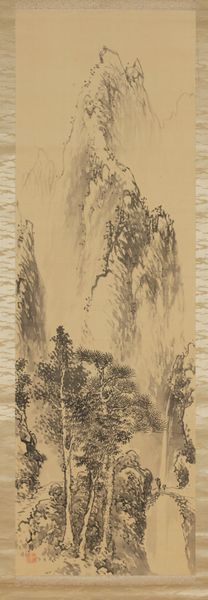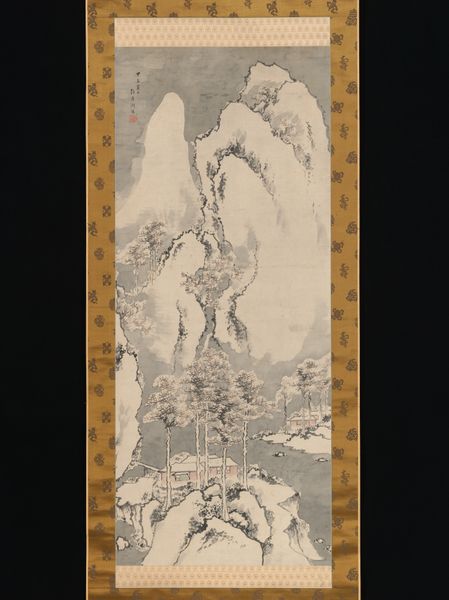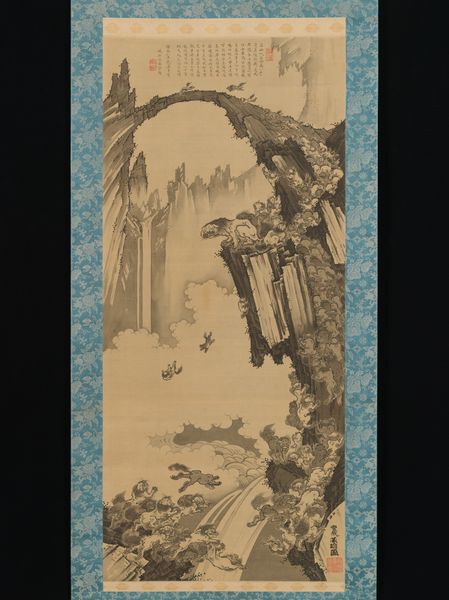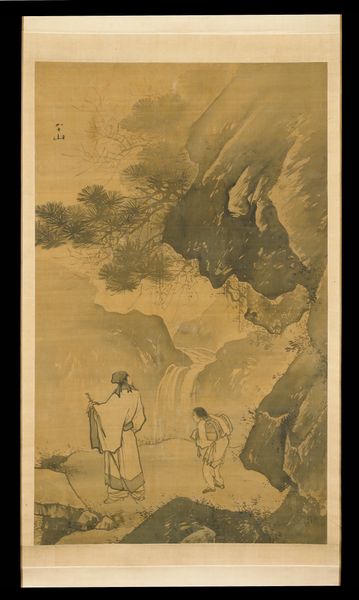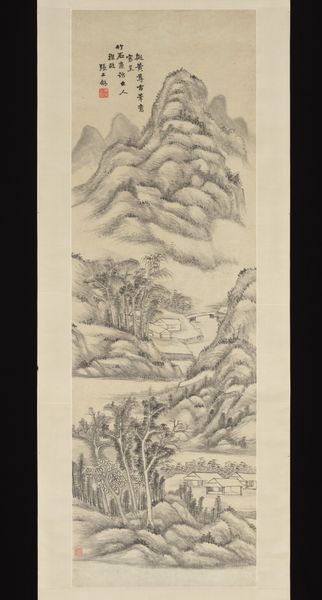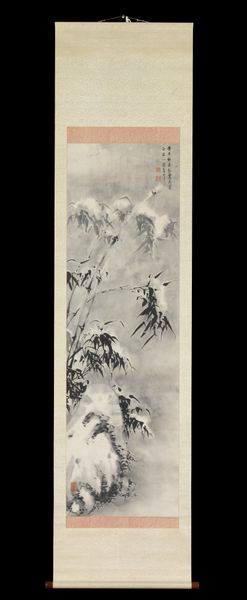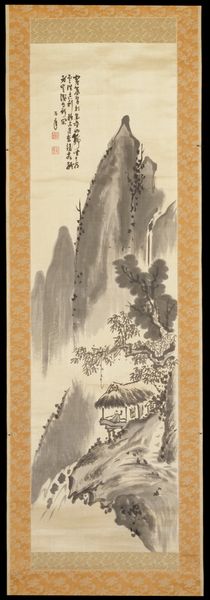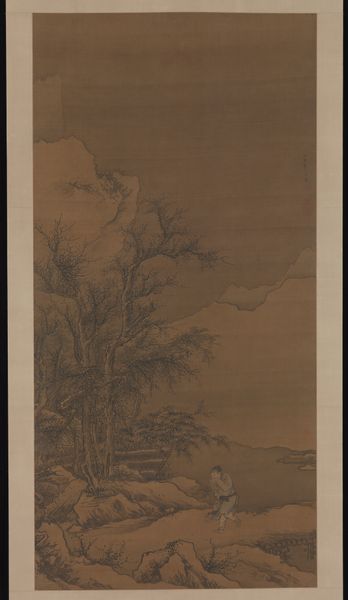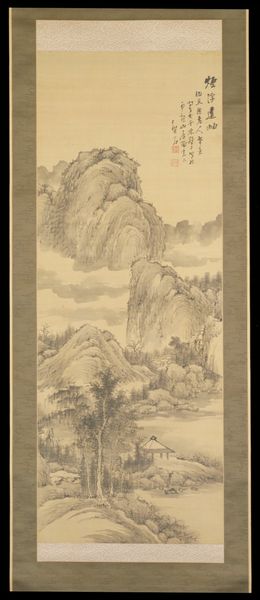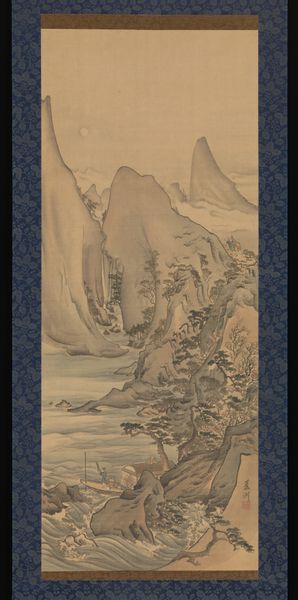
Dimensions: Image: 49 13/16 × 23 1/4 in. (126.5 × 59.1 cm) Overall with mounting: 88 3/16 × 29 1/8 in. (224 × 74 cm) Overall with knobs: 88 3/16 × 31 13/16 in. (224 × 80.8 cm)
Copyright: Public Domain
Curator: Looking at this landscape, there's a kind of peaceful melancholy that washes over me. Editor: That's a strong first impression. We are looking at Tani Buncho’s, *Landscape with Waterfall*. It was painted sometime between 1600 and 1899. I find the cascading water and mountainous terrain typical of the Yamato-e tradition interesting. What is striking here is that the composition uses ink, watercolor, and tempera; this mix has implications for how labor, skill and resources came together. Curator: It definitely draws me in with that muted color palette. And I love how the water, almost cloud-like, blends seamlessly with the sky. Is that typical, that blending? Editor: It’s interesting to consider that within this aesthetic context, waterfalls and landscapes weren't merely representations of nature, but symbolic embodiments of philosophical ideals related to nature as an industry and resource. The waterfall here can symbolize power but, crucially, can signify a specific approach to environmental engagement that the artist conveys through material use. Curator: Ah, now I'm imagining the artist carefully selecting the tempera, mixing ink just so... the physical labor. Did that selection influence the end result as much as the intended imagery? Editor: Exactly. This isn't just about depicting a beautiful scene, but showing the value and skill imbued with labor to show it, in a piece intended for a cultivated patron. Each stroke, each blending of material suggests the choices that were not solely aesthetic. Curator: You've turned my eye now to something less ethereal, I think. More real, even if the landscape feels distant. There's a weight to knowing how much goes into creating such stillness. I think this landscape feels like quiet work itself. Editor: Precisely, maybe it teaches us about finding the sacred in the act of creation, seeing artistic consumption in its totality. The act itself, not only its result. It recontextualizes nature itself as an artwork. Curator: Thanks for sharing this interesting viewpoint. Now, when I revisit, I'll hear a new and richer harmony in its stillness.
Comments
No comments
Be the first to comment and join the conversation on the ultimate creative platform.
